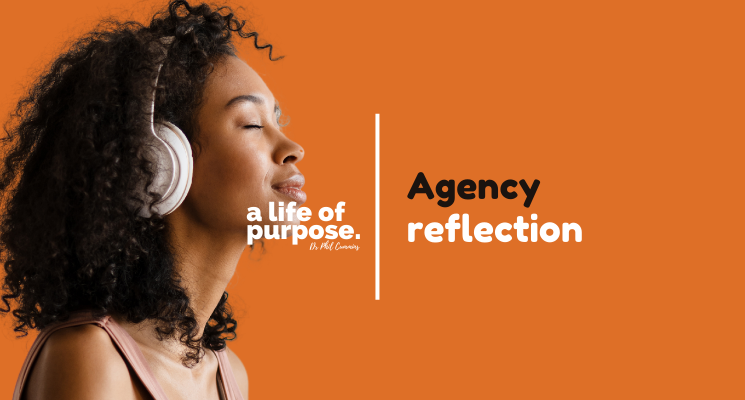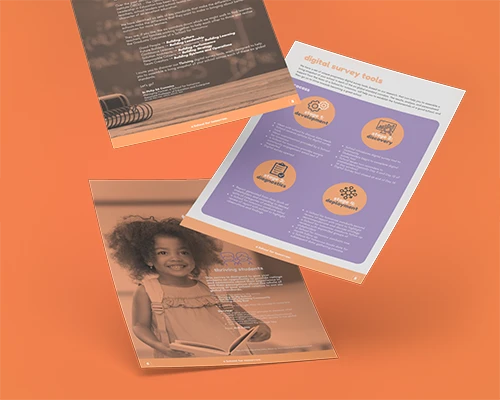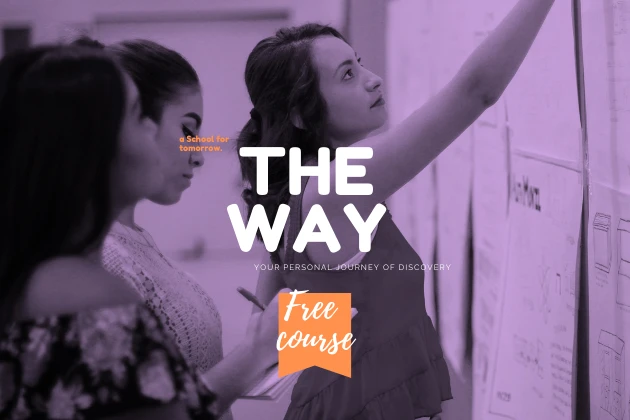
Dr Phil Cummins
Oct 30, 2022 | 3 minute read
Live: The Transformation Of Schooling
Dr Phil Cummins explores the transformation of schooling. Read more about the need for a conversation about priorities to enact today's learning for tomorrow's world.
Promotion
a School for tomorrow's
Community Membership
Come together in our global community of innovative, like-minded people and help create the future of education.
Join CommunityOf course, we are already engaged in a process of transforming schooling globally. Educators, students and families around the world have been responding remarkably to the changes in the location and conduct of learning imposed on them by the external circumstances of the pandemic – what was once deemed impossible became possible because we chose to make it so.
Whatever "normal" might look like in the future of our work in schools, it's unlikely to look like it once did – schools will need to listen to the evidence offered from within their whole communities and adopt the best of what remote learning offered to students and teachers as well as embracing the signal features of learning in close physical proximity.
Those who have adapted best to our times are those game changers who have had the courage to design, respond and adapt to learning that really suits our circumstances – the most successful learners, educators and families have developed better solutions drawing on first principles and using their adaptive expertise and self-efficacy to implement and support them.
We've got people out there who are absolutely busting a gut right now to change the way in which things are happening. They are confronting all sorts of norms and routines and structures that had previously sort of held things in place but which no longer work as needed. They are going back to first principles to think about what's important and what really matters.
It's really interesting watching teachers answering questions on a daily basis that address the fundamentals:
- What does good learning look like?
- How much time do I actually need to spend with my children so that they learn?
- How much time do we need to spend as a corporate group together?
- How much one-on-one interaction do I need to have with a child?
- How do I place the wellness and psychological safety and sense of belonging of a child first, as opposed to almost treating it as something that you think about at the end when you've covered the content?
- What does a whole education mean in practical terms for a student?
- How does the daily work of building character competency, and wellness fit within a whole education?
- What can I do to help my students to gain the adaptive expertise and self-efficacy required for them to thrive and succeed in their world?
The conditions for unpicking the fabric of twentieth century schooling were already well in play before the pandemic struck in 2019. What COVID has done is to compel people in schools to go through the most remarkable social experiment in transformation where they don't particularly know what the answers to all of these questions might be, but from what we can see, they are mindful that there's some really good learning that's going on along the way if we can construct the right sort of place to house this learning.
Transforming a school is complicated. It’s hard to predict what the consequences of change in a learning community will be. Imagine a series of buttons and lights in a grid. If you push a button down in the bottom left, a light might turn on in the top right. Push the same button, and another light might go on instead. It’s very much a network and knowing this can help you to think through how to transform a school to sustain its performance and to achieve its educational purpose.
If we're going to understand how a school network fits together in its quest to honour the new social contract of education and support it students to thrive in their world, we will need to step forward together into a preferred future where the vision and the vocabulary for education are shared, the values and value propositions of the school are agreed on by the school community, and the velocity, the shape and the trajectory of change are designed and implemented to meet the needs of internal and external contexts.
If we’re going to create an ecosystem for thriving in a school, we will need to introduce a kind of purposeful discourse about these issues, an exchange of ideas about and validation of the type of practice that will improve outcomes for more learners and prepare them to thrive in their world. We would call this type of discourse the “warranting of practice”.
We need to create a space where teachers can, will, and want to engage in this type of conversation. We need to help them to overcome that averseness to change that’s so very normal, natural and human.
To do this, I think we have to solve the problem of time in school: how much of it we need and what we do with it. We know already that there is no more time available to us. If we're going to make the work of thriving happen, we have to do something differently with how we conceive of opportunity.
All of this means we need to have an ongoing conversation about priority and perfectionism. Usually, the flow of this conversation needs to permission us to be doing fewer things rather than more things because adding more things rarely works. We need to think less about adding more in and more about the opportunity we have to create the best use of time. We need to test out the best ways to make the most of the opportunity that is presented to us to generate today’s learning for tomorrow’s world, to prepare each student to grow and experience excellence.
Let’s go!
Related Content

Article
Building Agency in Schools
Products & Services
Discover our 'Thriving' Digital Survey ToolsLike what you’ve read?
Let’s keep the conversation going.
